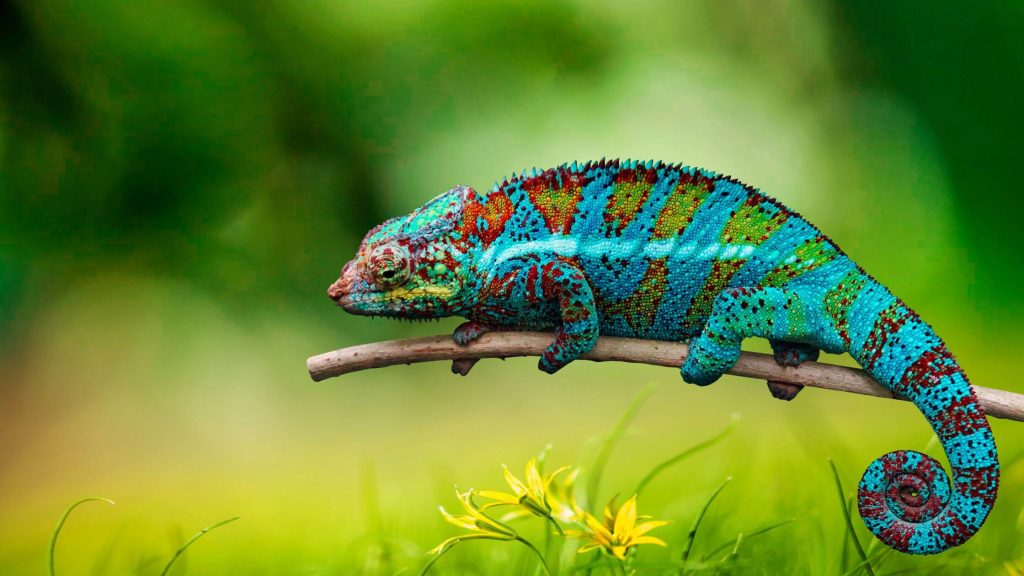
Is the Chameleon the Perfect Pet?
For many, the answer leans towards a resounding “yes”, and here’s why. Chameleons, with their unique color-changing abilities and calm demeanor, can be a truly fascinating addition to your home. They are like living art, constantly adapting their appearance in response to their environment and mood. This makes observing them not just interesting, but also a visual treat.
Additionally, chameleons are relatively low maintenance compared to other pets. They don’t require daily walks or constant attention, making them ideal for people with busy lifestyles or those who prefer a more hands-off pet-keeping experience. Their diet, mainly consisting of insects, is straightforward to manage, and their housing, while specific in terms of temperature and humidity, can be easily set up with the right equipment.
Moreover, chameleon pets can be a great educational tool for both children and adults. They offer lessons in responsibility and provide insights into the fascinating world of reptiles and their care. Their unique features, such as their independently moving eyes, zygodactylous feet, and prehensile tails, can spark curiosity and a love for learning about nature and different species.
However, it’s important to remember that chameleons are not the ideal pet for everyone. They require a specific habitat and can be sensitive to stress and changes in their environment. As a potential chameleon pet owner, it’s crucial to do thorough research and ensure you’re prepared for the commitment. If you are ready for the commitment, a chameleon can indeed be a perfect, if somewhat unconventional, pet. Now, let’s delve deeper and explore the captivating world of chameleons!
The Chameleon’s Unique Features
Chameleons, fascinating and often misunderstood reptiles, are well-known for their unique ability to change color and their extruded eyes that move independently. They require specific care and a suitable environment to thrive.
Chameleon Physical Details and Characteristics
| Characteristic | Detail |
|---|---|
| Physical Description | Distinctive rolled tail, crested head, ability to change color, zygodactylous feet |
| Diet | Insectivorous, consuming a varied diet of invertebrates |
| Behavior | Solitary, territorial, with unique hunting method using ballistic tongue projection |
| Lifespan | Varies by species, with some living just a few years, others over a decade |
| Size | Ranges from tiny pygmy species to larger veiled chameleons |
Can Chameleons be Pets?
Yes, chameleons can be kept as pets. However, because they have complex needs and are quite sensitive to stress and environment, they’re usually suited to more experienced reptile enthusiasts.
Are Chameleons Dangerous?
Chameleons are not inherently dangerous but can be defensive if they feel threatened. It’s essential to handle them gently and respect their space.
Is it Legal to Own a Chameleon?
Owning a chameleon is legal in many places, but always check local wildlife regulations to ensure compliance with any specific licensing or housing requirements.
Human Interaction
While not typically affectionate, chameleons can grow accustomed to human presence and handling if done respectfully and without causing them stress.
Cost of Chameleon Ownership
The initial cost for a chameleon may range from $30 to several hundred dollars, depending on the species. However, setting up their habitat and ongoing care like feeding, veterinary services, and maintaining their enclosures can be quite costly over time.
Facts About Chameleon Fur
Interestingly, chameleons don’t have fur; instead, they have scales that reflect different wavelengths of light, resulting in color changes for communication and temperature regulation.
- Chameleons change color through specialized cells below their transparent outer skin layer.
- Color changes help chameleons communicate with other chameleons and predators.
- They also regulate body temperature by darkening to absorb heat and lightening to reflect it.
- Color-changing ability varies greatly among the different species.
- Newborn chameleons may exhibit different color patterns compared to adults.
Pros and Cons of Owning a Chameleon
Pros:
- Unique and engaging pets with fascinating behaviors
- Aesthetically pleasing with a stunning array of colors
- Can form a bond with owners when regularly and gently handled
- They don’t require as much daily attention as some other pets
- Relatively small ecological footprint as pets compared to other exotic animals
- Provides an opportunity to learn about a unique branch of the animal kingdom
Cons:
- Require a significant investment in proper habitat setup
- Can be expensive to keep due to specialized diets, supplements, and veterinary care
- Sensitive to stress, handling, and changes in their environment
- Prone to specific health issues that require attentive care
- Not suited for loud, high-traffic household areas or homes with small children and other pets
- Difficult to properly care for due to their complex needs, not recommended for beginners
Fun Facts About Chameleons
- Their tongues can be as long as their bodies and they shoot out to catch prey at high speeds.
- Chameleons have panoramic vision, as their eyes can swivel independently, allowing them to see in two different directions at once.
- Some chameleons exhibit sexual dimorphism, meaning males and females look distinctly different.
- The smallest chameleon, Brookesia micra, can sit on the head of a match.
- Chameleons don’t have a middle ear, so they can’t hear well, but they can detect vibrations through solid objects.
- Chameleons have a specialized skeletal structure, with fused toes that help them grip branches firmly.
Caring for a Chameleon is a Commitment
Chameleons are enchanting creatures that can make great pets for the right person. Providing a varied diet of invertebrates is key to keeping them healthy. If you’re up for the challenge and committed to learning, a chameleon could be a source of joy and fascination in your life. Remember, caring for any animal is a serious commitment, but the rewards of creating a thriving environment for such a unique pet are numerous.
Beginner Guide to Raising Quail at Home
What are the Signs of a Dog Concussion?
What Causes Your Dog’s Ears to Smell Bad?
When your dog’s ears start to emit an unpleasant odor, it might leave you puzzled…
Methimazole Treatment for Cat Hyperthyroidism
Methimazole plays a crucial role in managing feline hyperthyroidism, a condition marked by an overactive…
Got Hummingbirds in your Backyard? Here’s How to Care for Them.
Why Does Your Cat Pee Outside the Litter Box?
Cat’s Litter Box Issues It’s not uncommon for cat owners to face the frustrating dilemma…




